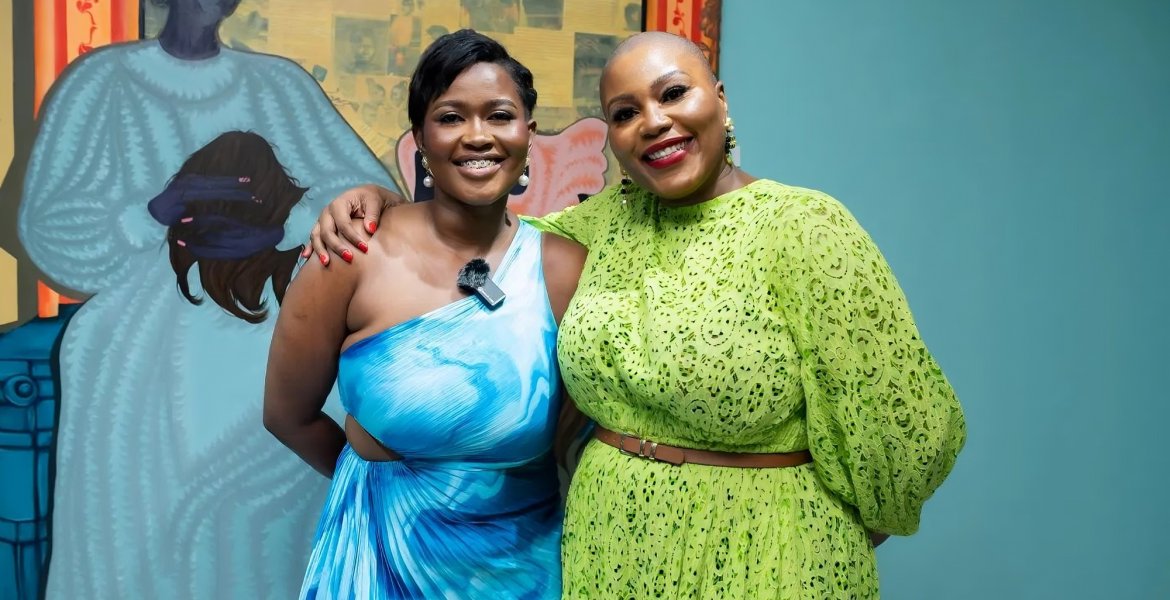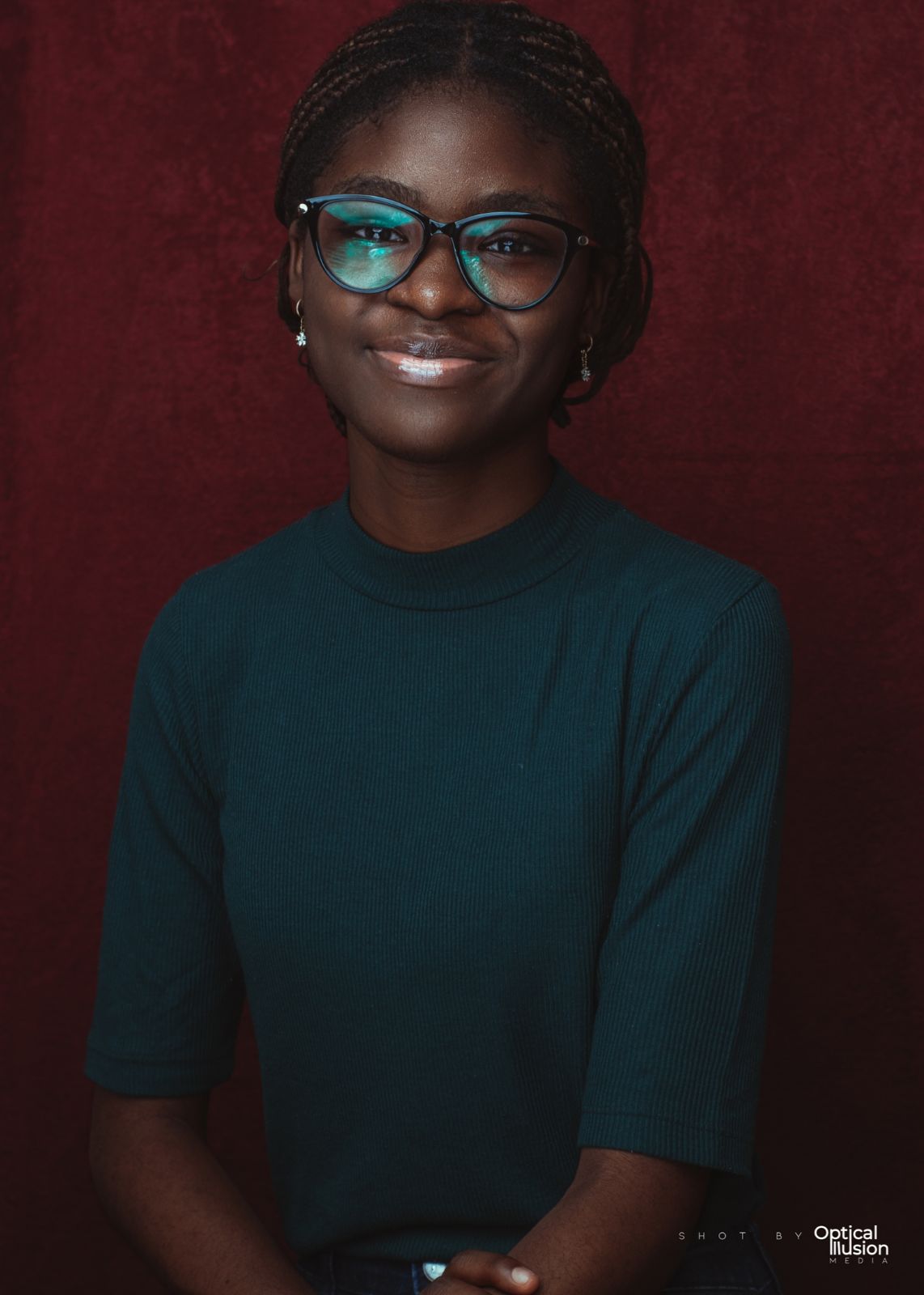Self-identity weaves our experiences, challenges, and triumphs, a delicate balance between self-perception and how the world sees us. What happens when a profound transformation disrupts this equilibrium? The profound art of Jessica Soares and the curatorial brilliance of Wana Udobang come into play.
Alopecia, a condition characterised by hair thinning and loss, reaches deep into the core of self-identity. It challenges individuals to redefine themselves beyond societal beauty norms on a journey of courage, resilience, and self-acceptance.
Jessica Soares intimately understands this journey. At 33 years old, she has embarked on this artistic odyssey that explores her experiences with alopecia and invites us to peer into the intricacies of self-identity in the face of transformation. In her world, each acrylic stroke tells a story of personal growth, empowerment, and growing self-esteem.
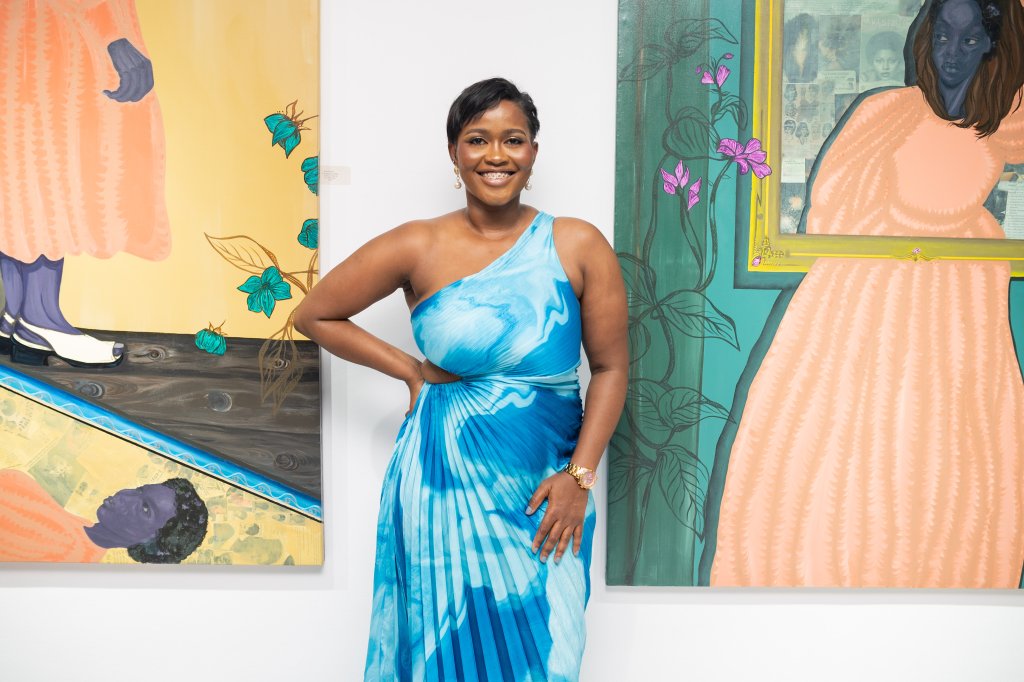
Image: Jessica Soares via Rele Gallery
What is alopecia?
Alopecia affects individuals of all ages and backgrounds and the exact causes can vary. With factors including genetics, autoimmune responses, hormonal imbalances, and environmental triggers, it occurs when the immune system mistakenly targets hair follicles as foreign invaders. This leads to hair loss, from patchy spots to complete baldness. Alopecia manifests physically and emotionally, challenging one’s self-worth and impacting one’s confidence and belonging in society.
Global and local prevalence of alopecia
According to statistics, approximately 147 million people worldwide live with alopecia. However, these numbers only scratch the surface, as many cases go unreported or undiagnosed.
In Nigeria, the prevalence of alopecia is also notable, although the exact figures are challenging because of underreporting and a lack of comprehensive studies. In a society where hair holds cultural and social significance, alopecia’s emotional and psychological impact is profound.
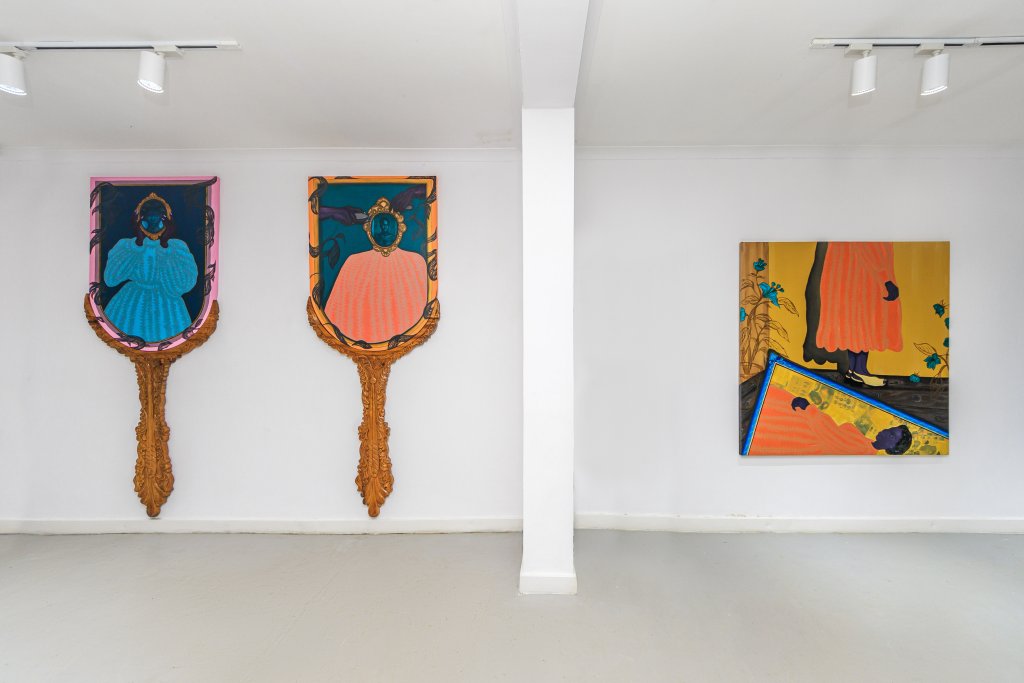
The emotional battle of alopecia
Beyond the physical manifestations, people dealing with alopecia may experience a profound sense of loss, an identity crisis, and a battle with societal expectations.
For Jessica Soares, alopecia is not just a subject of artistic exploration but a deeply personal journey. She hails from a lineage where alopecia has left its mark; her mother and grandmother suffered from this condition, facing stigma and societal pressure in an era of limited understanding and acceptance.
Jessica’s mother often wore wigs to conceal her hair loss, opposing wearing scarves, the more appropriate option. Jessica’s grandmother also hid her hair beneath scarves, becoming a mystery as people never saw her without her head covered.
Reflecting on her family’s experiences, Jessica expressed a deep wish, “I wish I could have told her before she passed it had a name and it was okay.” The lack of open conversations and the discomfort surrounding the condition resulted in people hiding their struggles rather than confronting them.
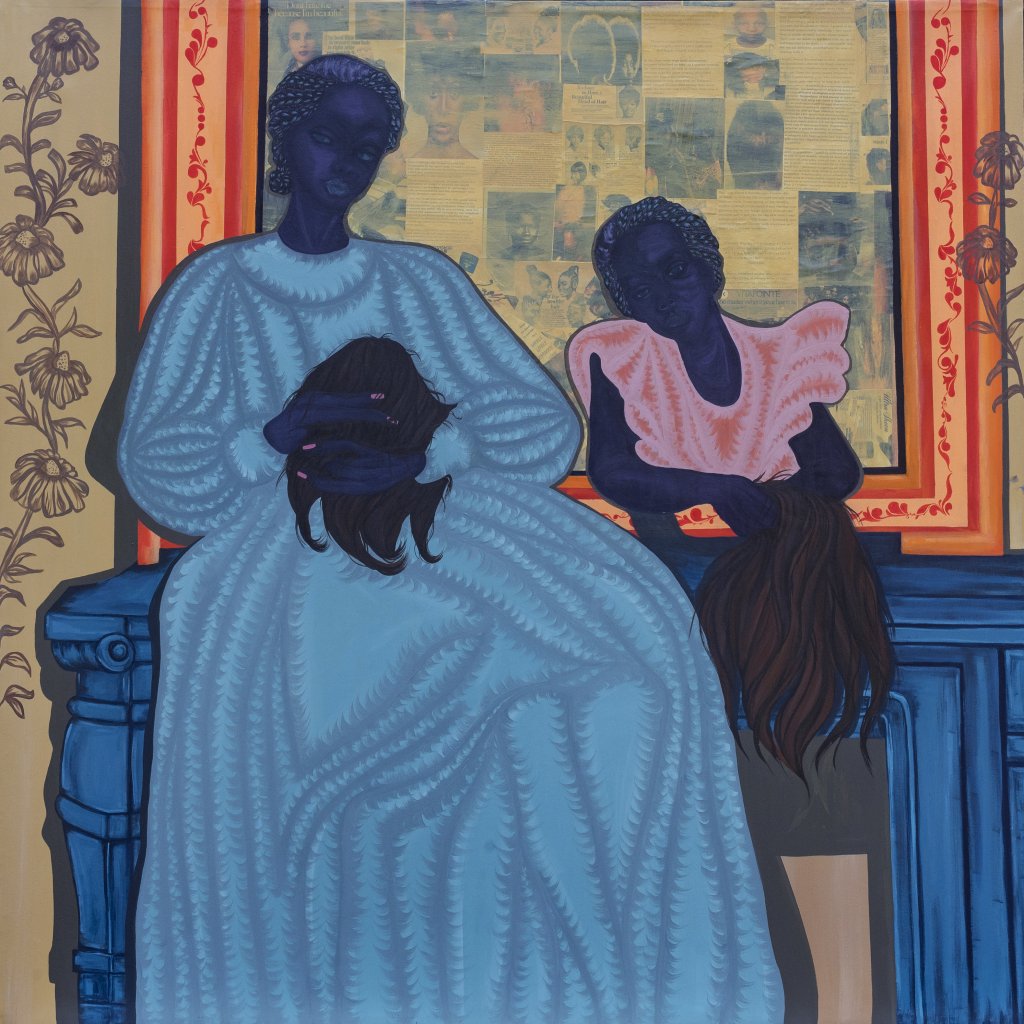
Jessica Soares’ journey with alopecia
Jessica Soares’ debut art exhibition, “Who We Are When The Glory Is Gone,” is an acrylic painting project that took 4 months to complete. Although hair played a profound role in her life because of hereditary alopecia, she only discovered the name and nature of her condition in 2020 during the pandemic, when her hair suddenly fell out again.
This transformative moment prompted Jessica to delve deeper into her research on alopecia, reshaping her perspective and inspiring her art. She shifted from wishing for voluminous hair to embracing vulnerability, a pivotal step she took at the Rele Art Foundation in 2021. Her art became a canvas for documenting her journey, from childhood experiences to evolving self-perception and strategies for life with alopecia.
Jessica’s art is a vulnerable invitation, a powerful voice speaking for those facing similar struggles. It fosters empathy and dialogue about underrepresented women’s issues, demonstrating that physical attributes don’t define identity. Times with hair are moments of vibrant expression, while her thinning patches symbolise life’s cycles, prompting her to cut her hair. ‘I want people to relate to and see themselves in it. Even if it’s not hair you’re dealing with. Any problem at all, just know that it doesn’t define you.’
The role of curator Wana Udobang
Wana Udobang plays a vital role in creating Jessica’s profound exhibition. While Wana’s struggle with alopecia led her to shave her hair, the broader theme of belonging ignited her curatorial passion.
Wana recognised the universal significance of Jessica’s art—an exploration of the quest to fit into societal moulds defined by appearance. The world often values individuals based on superficial attributes; the pursuit of belonging is a shared experience. However, Jessica’s art transcends the specifics of alopecia, encompassing the broader spectrum of human identity.
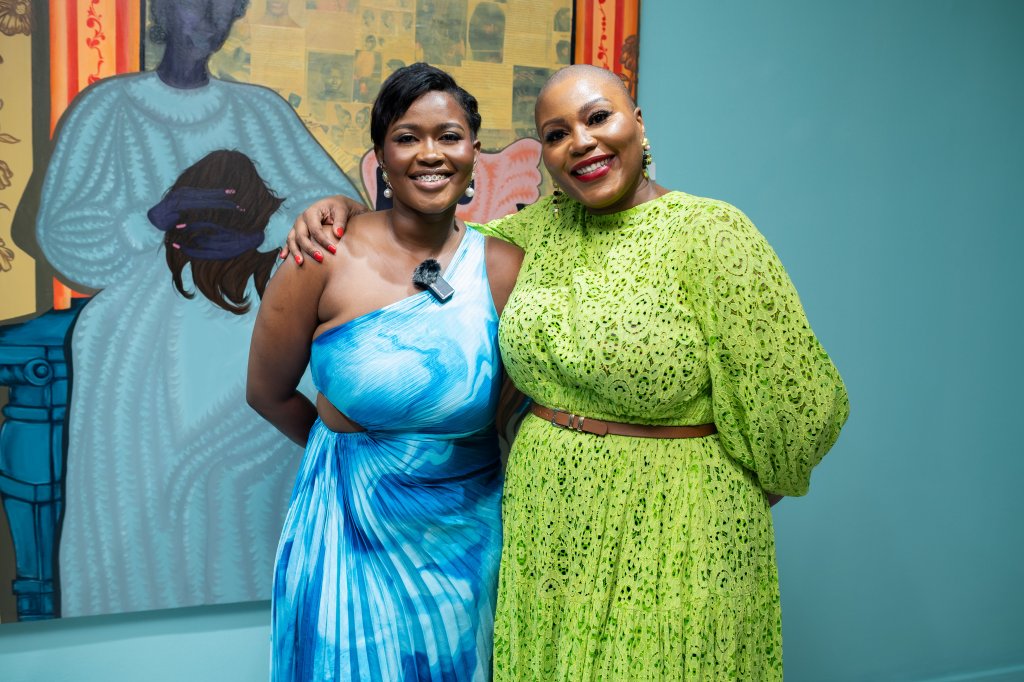
While it begins with the subject of hair, it transcends these confines, delving into the complex tapestry of beauty, self-worth, and material value in our lives. Thanks to Wana’s insightful curation, Jessica’s work has evolved into a universal narrative by sparking conversations among diverse audiences, especially women.
Impact and expectations of the exhibition
In a candid exploration of beauty, identity, and belonging, Jessica Soares and curator Wana Udobang hold high expectations for the profound impact of the exhibition, “Who We Are When The Glory Is Gone.” For Jessica, the exhibition’s title encapsulates a poignant question: Does the absence of societal beauty norms diminish one’s womanhood or glory?
“So if my hair is gone, does that mean I’m not a woman? Does that mean I am no longer glorified? If we’ve been speaking over the phone and you see me physically with no hair, do you like me less?”, she asks.
Delving into the intricacies of the exhibition’s characters, Wana emphasises its untidy and unresolved nature, mirroring the complexities of real-life experiences.
“The paintings in many ways are provocations that ask you to see people, not just to look at them but to see them as who they are, and to value them as that.’, Wana concludes.
The potential impact of this exhibition extends beyond art. By fostering empathy and understanding, it contributes to important conversations on beauty norms, self-identity, and acceptance on a global scale. As a powerful medium for challenging traditional perceptions, art, in this context, catalyses societal change and that’s what I love about it.

